Crave a Lap-Warmer? This Love Bug’s for You
This breed is highly affectionate and can't get enough attention and cuddling. So if being followed from room to room and a 'chatty,' friendly personality strike your fancy, you'll be richly rewarded with this gorgeous and uncommon breed.

STORY AT-A-GLANCE
- The Tonkinese was created by humans by crossing Siamese and Burmese cats
- Tonkinese have distinctive oval-shaped paws and many have beautiful blue or aquamarine eyes
- The Tonk is an outgoing, playful cat that craves attention and especially affection from his humans
- If you’re thinking of adding a Tonkinese cat to your family, be sure to check your local shelters and rescue organizations for adoptable cats
Editor's Note: This article is a reprint. It was originally published January 22, 2016.
The Tonkinese was created by humans by crossing Siamese and Burmese cats. Tonkinese have distinctive oval-shaped paws and many have beautiful blue or aquamarine eyes. The Tonk is an outgoing, playful cat that craves attention and especially affection from his humans.
If you’re thinking of adding a Tonkinese cat to your family, be sure to check your local shelters and rescue organizations for adoptable cats.
8 Fascinating Facts About Tonkinese
- The Tonkinese is a cross between a Siamese and a Burmese
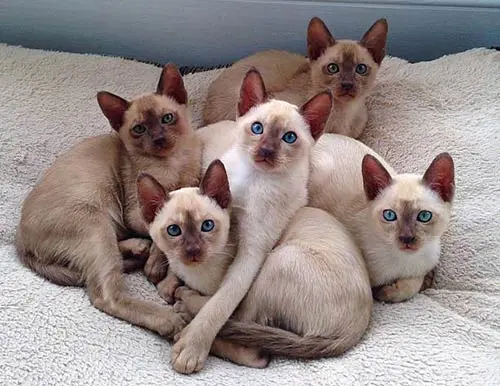
The Tonkinese is a human-designed domestic cat breed — the result of crossing Siamese and Burmese breeds. The goal was to create a cat with a less sharp voice than the Siamese, but with the affectionate nature and intelligence both breeds share.
The mixing of Siamese and Burmese breeds has resulted in three common coat patterns in the Tonkinese: solid, like the Burmese; pointed, like the Siamese; and mink, which is a combination of the two. It takes up to two years for the Tonkinese coat color to fully develop. - The Tonkinese graduated from crossbreed to purebred in 2001
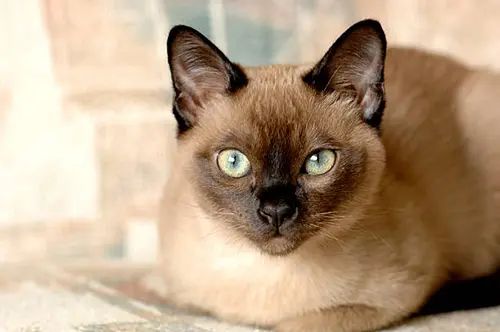
Today’s Tonkinese is the result of the crossbreeding of Canadian Siamese and Burmese cats. The breed was recognized in Canada in 1971 and received full recognition from the Cat Fanciers Association in 1984.
The Tonkinese was officially moved from crossbreed status to an established breed in 2001.
The name Tonkinese refers to the Tonkin region of Indochina for no particular reason, since the breed has no connection with that area of the world. - Tonkinese weigh just 6 to 12 pounds, but are surprisingly heavy when picked up
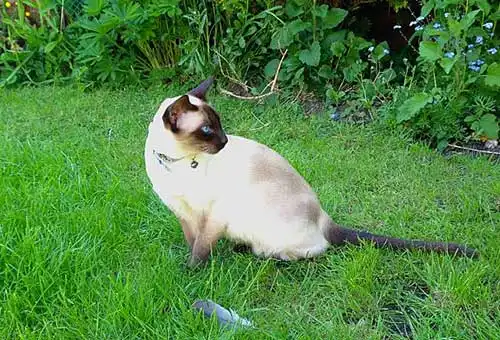
The Tonkinese is a medium-sized kitty with a build that falls somewhere between the long, lean lines of the modern Siamese and the slightly bulkier Burmese. The Tonk, as he is known, has a muscular body that is heavier than it appears.
The Tonkinese has distinctive oval paws, a slightly wedge-shaped head, and almond-shaped eyes that are often a shade of blue. Tonks with mink colored coats frequently have aquamarine eyes. - The Tonk is a natural entertainer
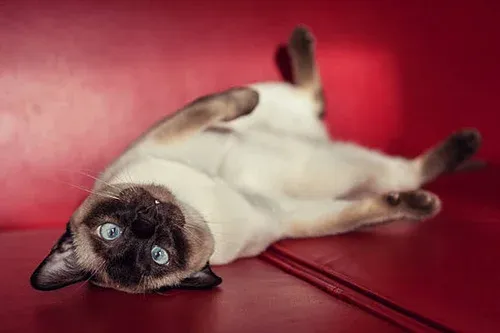
The Tonkinese is a smart, outgoing and energetic kitty. Tonks tend to follow their humans from room to room, ride on their shoulders, and insist on being involved in all goings-on in the home.
Since your Tonkinese is quite social, if you’re gone a lot, it’s a good idea to pair her up with another cat or even a friendly dog to keep her company.
Tonks like to jump up on high surfaces, retrieve toys, and can learn to walk on a leash and harness. To keep her body active and her mind stimulated, teach your Tonkinese tricks and make use of a variety of interactive toys. - The Tonkinese is a love bug
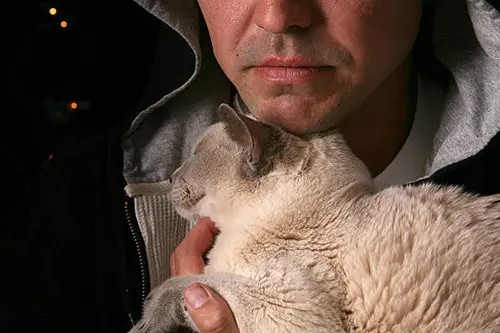
If you’re not into lap cats, the Tonk probably isn’t for you. This breed is highly affectionate and can’t get enough attention and cuddling. The Tonkinese also tends to be quite the conversationalist, and gets along well with gentle children and other pets. - Tonkinese are healthy cats
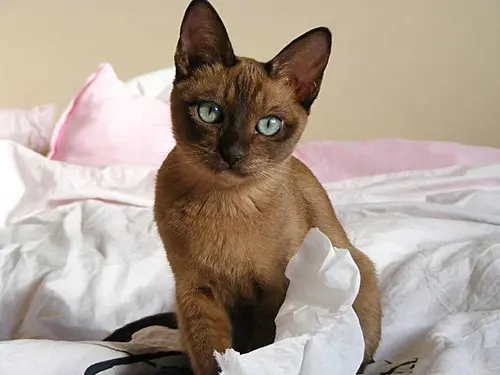
Tonkinese are a generally healthy and hearty breed, though they can be prone to gingivitis (gum disease), and may be sensitive to anesthesia. Because they are descended from the Siamese, they may develop some of the same diseases. The average lifespan of the breed is 10 to 16 years. - The Tonkinese coat is easy to care for
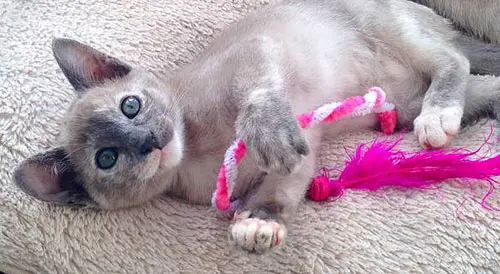
The Tonkinese coat is soft and short, so it can be well maintained with a weekly brushing to pull away dead hair and distribute oils on the skin. Because your Tonk may be prone to gum disease, you should brush his teeth daily or several times a week. - Tonkinese can be hard to find
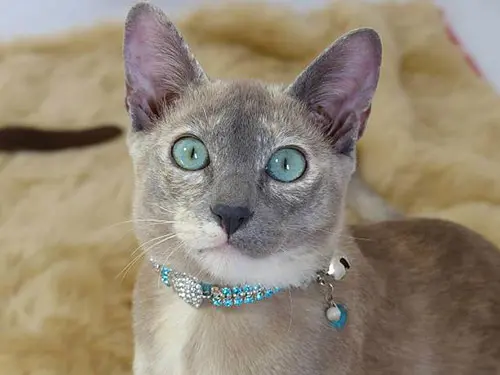
This is especially the case if you’re hoping to adopt a homeless Tonk. This breed is uncommon, so it’s unlikely that you will find one in a shelter or through a rescue group (but please look there first). Also check websites such as Petfinder, Adopt-a-Pet.com or the Fanciers Breeder Referral List, and ask breeders if they know of a Tonkinese who is in need of a new home.











